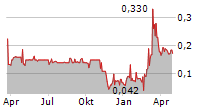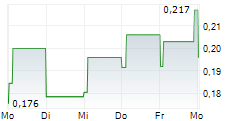STOCKHOLM, SE / ACCESS Newswire / September 4, 2025 / AlzeCure Pharma AB (publ) (FN STO:ALZCUR), a pharmaceutical company that develops candidate drugs for diseases affecting the nervous system, focusing on Alzheimer's disease and pain, today announced that its presentation at the international pain conference NeuPSIG 2025 is now available in full on the company website. The presentation includes data from the Phase II clinical study with the company's lead clinical drug candidate in pain, ACD440.
"Our data from the phase II study with ACD440 showed that the substance reduces temperature-induced pain by approximately 50%, a significant and clinically relevant reduction. These positive data are in line with the results from the phase Ib study and we have also demonstrated proof-of-mechanism in patients," said Dr. Märta Segerdahl, MD, PhD, project leader and CMO at AlzeCure Pharma.
The presentation, titled The TRPV1 antagonist ACD440 Gel as a tool in pain precision medicine, results of a post hoc analysis , was made by Dr. Segerdahl and contains an analysis of the results from the Phase II clinical study with ACD440, the lead drug candidate in the Painless platform.
The results from the further analysis of the clinical study data from the Phase IIa study of ACD440 in patients with chronic peripheral neuropathic pain show that ACD440 has potent analgesic effects, especially in heat-induced pain, a common and distressing phenomenon for this patient group. This is also well consistent with the target mechanism of ACD440.
ACD440 is a first-in-class TRPV1 antagonist in clinical development as a novel topical local treatment for chronic peripheral neuropathic pain. The drug candidate, which was incorporated via a strategic in-licensing, originated in Big Pharma and is based on a strong scientific foundation, which was awarded a Nobel Prize in 2021.
The substance is being developed as a gel for topical use, which keeps systemic exposure very low while maintaining high local concentrations of the substance to achieve maximum analgesic effect and over a long period of time. ACD440 recently received orphan drug designation from the US FDA for the rare disease erythromelalgia, and has also received positive feedback from the FDA for a potential registration study regarding erythromelalgia.
"The positive results from the completed proof-of-mechanism study in patients with peripheral neuropathic pain and the recent orphan drug designation from the FDA demonstrate the great potential value of ACD440, making the project interesting for both investors and pharmaceutical companies with regards to out-licensing," said Martin Jönsson, CEO of AlzeCure Pharma AB.
The presentation is now available in full on AlzeCure's website ( https://www.alzecurepharma.se/sv/presentationer-och-intervjuer ).
For more information, please contact
Martin Jönsson, CEO
Tel: +46 707 86 94 43
martin.jonsson@alzecurepharma.com
About AlzeCure Pharma AB (publ)
AlzeCure ® is a Swedish pharmaceutical company that develops new innovative drug therapies for the treatment of severe diseases and conditions that affect the central nervous system, such as Alzheimer's disease and pain - indications for which currently available treatment is very limited. The company is listed on Nasdaq First North Premier Growth Market and is developing several parallel drug candidates based on three research platforms: NeuroRestore ® , Alzstatin ® and Painless.
NeuroRestore consists of two symptomatic drug candidates where the unique mechanism of action allows for multiple indications, including Alzheimer's disease, as well as cognitive disorders associated with traumatic brain injury, sleep apnea and Parkinson's disease. NeuroRestore has received an EU grant from the European Innovation Council and is being prepared for phase 2. Alzstatin focuses on developing disease-modifying and preventive drug candidates for early treatment of Alzheimer's disease. Painless contains two projects: ACD440, which is a drug candidate for the treatment of neuropathic pain with positive phase 2 results and orphan designation from the FDA, and TrkA-NAM, which targets severe pain in conditions such as osteoarthritis. AlzeCure aims to pursue its own projects through preclinical research and development through an early clinical phase, and is continually working on business development to find suitable outlicensing solutions with other pharmaceutical companies.
FNCA Sweden AB is the company's Certified Adviser. For more information, please visit www.alzecurepharma.se .
About neuropathic pain
Neuropathic pain affects approximately 7-8 percent of the total global adult population, approximately 600 million individuals. Some patients, with indications such as diabetes and HIV, are affected to a greater extent, where approximately 25 and 35 percent respectively of the patients experience neuropathic pain.
Peripheral neuropathic pain is the result of various types of damage to the nerve fibers, such as toxic, traumatic or nerve compression injuries as well a metabolic and infectious diseases. Common symptoms are painful tingling that can be described as "pins and needles", or choking or burning pain, as well as the feeling of getting an electric shock. Patients may also experience allodynia (pain caused by a stimulus that usually does not cause pain) or hyperalgesia (increased pain from a stimulus that normally provokes pain).
The market for neuropathic pain is characterized by a major medical need in all indications and in all major markets, where about 70-80 percent of patients do not get effective pain relief with existing treatment. Due to the risk of abuse, overdose and secondary damage, people now try to avoid opiates as first-line treatment for pain conditions. Despite this treatment problem, these preparations are still used frequently, and therefore the need for new treatments that are not opiates is very great.
The patient population will grow, among other things, due to an aging population and increased number of long-term cancer survivors and increasing prevalance of type-2 diabetes.
The global market for neuropathic pain was valued at $11 billion in 2020 and is expected to grow to $25 billion by 2027.
About erythromelalgia
Erythromelalgia is a rare condition that affects just over 13 in 100,000 people and causes burning pain, redness, warmth and swelling, most often in the feet or hands. The symptoms are worsened by heat and relieved by cold. The disease can be primary (inherited) or secondary to other conditions, as part of autoimmune diseases, as a side effect of certain medications, or an effect of certain blood disorders (e.g. polycythemia vera or essential thrombocythemia). The cause is believed to be a combination of disturbances in the nervous system's pain signaling and the function of the thinnest blood vessels. Treatment focuses on relieving symptoms, often with cooling, pain medications and sometimes drugs that affect blood flow or nerve signals.
Erythromelalgia is a very painful condition characterized by burning pain, which occurs in sudden attacks triggered by heat, either in the environment or locally. These attacks can last for several hours, and recur from a few times a week to several times a day. Patients often describe the pain as if the skin is "burning".
Cooling the painful area is the most effective relief, while despite the frequent trials of many drugs, there is no established effective treatment. Frequent or prolonged cooling as a treatment often leads to severe frostbite and infection, which can be life-threatening.
The disease greatly affects quality of life. Walking, standing or just being in warm environments or wearing shoes that get hot can be unbearable. Many have difficulty managing their jobs, experience sleep problems and suffer from isolation.
Image Attachments
Martin Jönsson O Märta Segerdahl AlzeCure Pharma
Attachments
Data from AlzeCure's pain project ACD440 presented at the NeuPSIG 2025 pain conference
SOURCE: AlzeCure Pharma
View the original press release on ACCESS Newswire:
https://www.accessnewswire.com/newsroom/en/healthcare-and-pharmaceutical/data-from-alzecures-pain-project-acd440-presented-at-the-neupsig-2025-1068716



